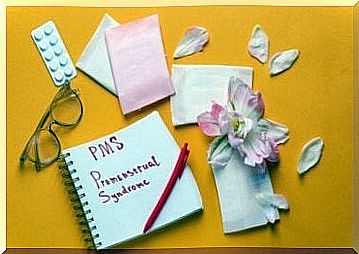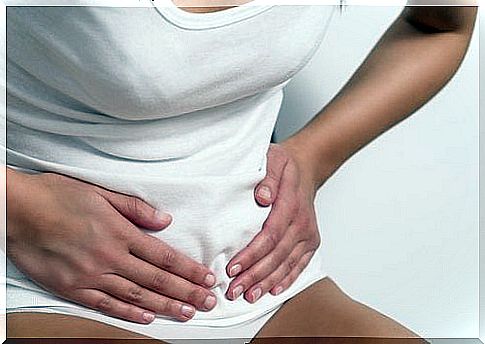Relieving PMS Through Food – You Are Parents

PMS is a set of physical, psychological and behavioral symptoms that affect 80% of women. It is also important that you know that the severe form is known as premenstrual dysphoric disorder and affects only 1.3 to 5.3% of the population.
These symptoms appear in the luteal phase (after ovulation) and end 2-3 days after menstruation. If you are tired of being prevented from continuing with your life or taking anti-inflammatory drugs, read on as you can use food to relieve this condition.
Clinical symptoms of PMS
It is manifested by at least one of the following symptoms:
- Abdominal swelling
- Breast pain
- Headache
- Muscle or joint pain
- Fluid retention
- Weight gain
- Anxiety
- Lack of concentration
- Tired
- Irritability and altered mood
- Sadness
In addition, it must occur for at least 3 consecutive cycles. On the other hand, in premenstrual dysphoric disorder, there must be at least 5 of these symptoms.

The causes of premenstrual syndrome
Everything indicates that the variations in estrogen and progesterone are responsible for it. This is a phase in which estrogen is low and progesterone is at its peak. Therefore, these hormones work by altering the levels of neurotransmitters such as serotonin, dopamine, and GABA, whose function is to regulate mood. Blood pressure is even broken down by affecting the renin-angiotensin-aldosterone system.
To manage these processes, the diet should focus on providing nutrients that neutralize them and alleviate symptoms. In addition, these are nutrients that tend to decrease during this period. Finally, the other risk factors are tobacco and stress.
Diet to relieve PMS
Why is it essential to include omega-3s in the diet to relieve PMS?
Basically, because they are anti-inflammatory and work in the brain by increasing concentration, since the brain is mainly made up of fat. They play a key role in reducing the severity and duration of depression, swelling, and anxiety.
Foods rich in this type of fat are oily fish (sardines, salmon, anchovies and tuna), dried fruits (especially nuts and almonds) and seeds. The benefits of evening primrose oil, which contains linoleic acid, are also known.
How to modulate your mood with vitamin B6
Vitamin B6 is a cofactor involved in the synthesis of tryptophan, a precursor of serotonin and dopamine. It is therefore essential to increase them, because they drop significantly. When these neurotransmitters are weak, we are more sensitive, which makes us easily excited and sad.
This vitamin B6 is found in bananas, oatmeal, pure cocoa, pineapple, salmon, eggs and avocado.
Reduce muscle pain with magnesium to relieve PMS through diet
Magnesium is one of the minerals whose blood levels are reduced at this stage. When there is a deficit, aldosterone increases. This leads to an increase in water retention and, consequently, a decrease in dopamine. In addition, its main function is to allow muscle fibers to communicate with each other. If we do not have enough reserves, cramps appear. It is found in seeds, legumes, millet and quinoa.
The synergy between calcium and vitamin D
As we explained at the outset, estrogen levels are low when this syndrome occurs. And what is going on? Well, the hormone PTH rises, making it difficult for calcium to be absorbed. And if it happens that vitamin D is also low, the situation gets even worse. For this reason, it is essential to eat foods like broccoli, cabbage, almonds, beans, yogurt, and goat cheese, as well as blue fish and eggs. And don’t forget to be in the sun for at least 15 minutes a day.

Foods that make PMS worse
And, as with any pathology, there are always certain foods that negatively affect the development and intensity of the condition. Here are the main ones:
- Alcohol
- Coffee and energy drinks due to caffeine, which generates a decrease in B6 stores at this stage. An alternative is to drink decaffeinated coffee or herbal teas.
- Soft drinks
- Pastries, including cookies
- Fast food (pizza, hamburgers …)
- Salty snacks
- Fried
Exercise is also therapeutic
Regardless of diet, exercise has a relaxing, numbing, anti-inflammatory effect and improves our mood, as it stimulates the production of endorphins. In addition, we must add its effects on physical and metabolic health, which can be summarized by the quote below.
Once the benefits of exercise have been discussed, it only remains to say that aerobic exercise, such as running, walking or cycling, should be done at least 3 times per week. It is also advisable to combine it with strength training. The latter should be put in place by a personal trainer who is responsible for correcting the technique and thus avoiding injury.
Here’s all you need to know about the therapeutic effect of diet and lifestyle on PMS. Remember to take the time to take care of yourself and rest in order to regain your strength, as we tend to forget that it is necessary to stop at some point. Even if it doesn’t look like it, the body notices it. Or maybe you still feel like this with every cycle?









